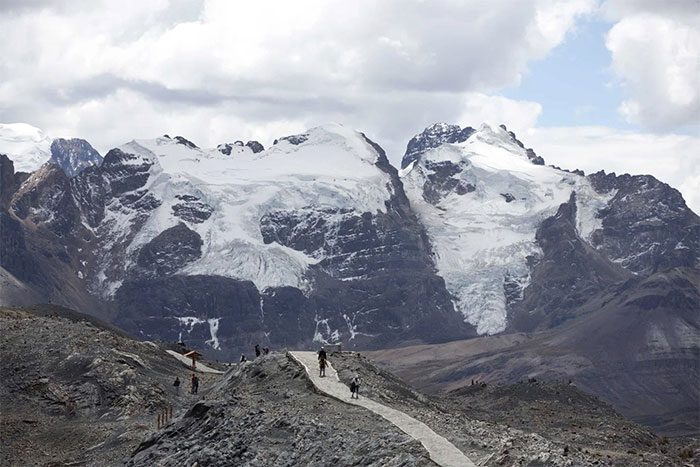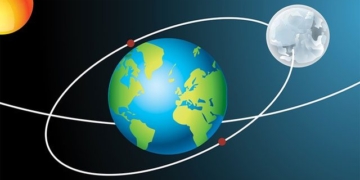In 58 years, 56.22% of the glacial area recorded in 1962 in Peru has disappeared.
On November 23, Peruvian scientists from the National Glacier and Mountain Ecosystem Research Institute reported that the country has lost more than half of its glacial surface over the past six decades and 175 glaciers have gone extinct due to climate change from 2016 to 2020.

Tourists walking on the Tuco Glacier in Huascaran National Park during a tour called “Climate Change Route” in Huaraz, Peru. (Source: AP.)
Mayra Mejía, an official at the National Glacier and Mountain Ecosystem Research Institute (Inaigem), stated: “In 58 years, 56.22% of the glacial area recorded in 1962 has disappeared.”
Jesús Gómez, Director of Inaigem, believes that the most significant factor causing this impact is the rise in global average temperatures, which is rapidly retreating glaciers, especially in tropical regions.
This South American country now has 1,050 km2 of glacial coverage, which represents about 44% of the area recorded in 1962, when the first glacier inventory was conducted.
Mejía noted that there are several mountain ranges in Peru where glaciers have nearly vanished, particularly Chila, which has lost 99% of its glacial surface since 1962. Chila is crucial as it is the primary source of water that forms the Amazon River, the longest and most magnificent river in the world, which originates from glaciers.
According to Beatriz Fuentealva, President of Inagem, the loss of glaciers increases risks for those living in low-lying areas, as occurred in 1970 when a massive ice block from Huascarán, covered in snow in the northern Andes, broke off after a snowstorm. The 7.9 magnitude earthquake caused it to fall into a lagoon, triggering an avalanche that destroyed the city of Yungay and resulted in the deaths of over 20,000 people.



















































